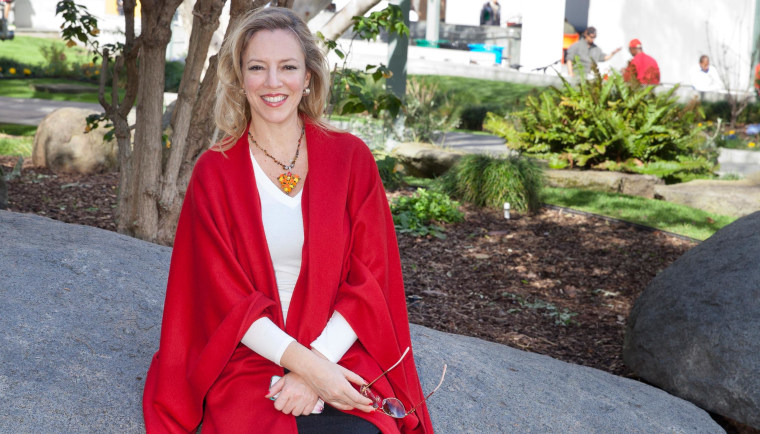Cayetana S. Gómez is ready for a challenge. As the newly hired president and chief executive officer of the Mexican Museum in San Francisco, Gómez will be responsible for overseeing operations at the Museum’s current home as well as implementing plans for its new location as the institution celebrates its 40th anniversary this year.
Founded in 1975, The Mexican Museum was originally envisioned as a showcase for the art of Mexicans and Mexican-Americans. Since then, the Museum’s vision has broadened, and its collection encompasses Pre-Hispanic, Colonial, Popular, Modern, Contemporary, Latino, and Chicano artworks. In 2012, the Museum became the first San Francisco museum to join the Smithsonian Institution’s Affiliation program, the largest museum network in the U.S.
Gómez, 47, joins the Museum at a pivotal moment. The same year it celebrates its fourth decade it is about to break ground on its new home on the lower floors of a condominium tower. This move has been long awaited as well as controversial; an earlier attempt to move into a new space in 2001 fell through after the dot-com bubble burst, and the new Museum site has been the subject of lawsuits by local residents. Groundbreaking is scheduled for mid-June, with the new Museum set to open in Spring 2018.
The mother of two sons, Gómez was previously director of public relations and fundraising for Mexico City’s Museo de Memoria y Tolerencia. She also served as the managing director of the Museo Morelense de Arte Popular in Cuernavaca.
New to the U.S. – she has lived in San Francisco for only about a month – Gómez recently spoke with NBC News about her life and her plans for the Mexican Museum.
NBC: Growing up, were you always interested in art?
CG: Yes, it has always been fascinating for me. My mother worked in the National Museum of Anthropology in Mexico City, and that was an amazing experience for the entire family. We got to know directors, professors, and students. We went to anthropological sites, and all though my childhood and young adulthood I was observing photographers, historians, and artists. It was an honor and a real privilege. They inspired my curiosity and my passion for art. So I guess I have museums and art in my blood!
NBC: Is it intimidating to be taking over at the Museum at such an important time in its history?
CG: I have been working in museums for most of my professional life, but there is a lot at stake here. I have put so much faith in our plans, and so have our partners and fundraisers. There are many moments when I feel like, wow, this is a rollercoaster, but there is an amazing Latin American spirit about the whole project. I feel renewed every day, because there is a lot of heart in our work.
NBC: What can you tell us about the new site for the Museum?
CG: The new building is going to be fantastic, right in center of Yerba Buena. We are working with the renowned Mexican architect Enrique Norton, and the artist of the façade is Jan Hendrix, he is internationally known. We will be next to the Contemporary Jewish Museum, and across from St. Patrick’s Church. Aside from the amazing aesthetics, the new museum will be much, much bigger than our current home. We will finally be able to display our full collection, and we will have four complete floors. We will have 13 galleries, a cafe, a theater, classrooms, and more.
NBC: Are you concerned about the pushback from some residents against the Museum’s proposed new site?
CS: I take it seriously, but our plans are moving forward. I suppose that this kind of controversy is natural in big cities, it is part of the process. In all big cities, things must be approved by the arts council, the city government, everyone involved. I think we are ready to move forward; everything is settled now. So it (the lawsuits) was a natural part of process of obtaining approval from the city, from the community, and just being part of the fabric of the city. Actually, every hurdle is a gift; it helps us be more responsive and aware of our community.
NBC: A 2010 report by the American Association of Museums found that Latinos accounted for only 8.6 percent of museum visitors. How can you can you get more Latinos in the habit of supporting and becoming part of the museum community?
CG: That is the challenge! One reason that more Latinos do not come to museums is simply the time factor; they are working and taking care of their families and they may not be in the habit of thinking about a museum as a recreational option or activity. Or, working-class people may have the wrong impression that they are not welcome or would feel intimidated by museums. This is reality, but we can change reality – that’s why the Museum is so important. This is a museum that can truly get the community involved, from tourists to local residents.
We are also working hard so that our institution is an educational hub. The new model for a museum is not just copying other museums; the trend is to emulate universities. Museums must be active and alive, and filled with people learning and studying – and enjoying themselves. So we will be partnering with schools, including the University of California at Berkeley. We are planning everything from Family Sundays to Spanish classes, salsa, and meringue, anything to get people to come and explore the vast, rich Latino and Latin American art scene. We are going to provide a great artistic experience for our visitors. Our culture is so unique, and we are all thrilled to share it with the world.
The Mexican Museum has free admission. Its current exhibition is Maestros: 20th Century Mexican Masters, including the works of Diego Rivera, David Alfaro Siqueiros, and Jose Clemente Orozco. Now through June 28, 2015.
